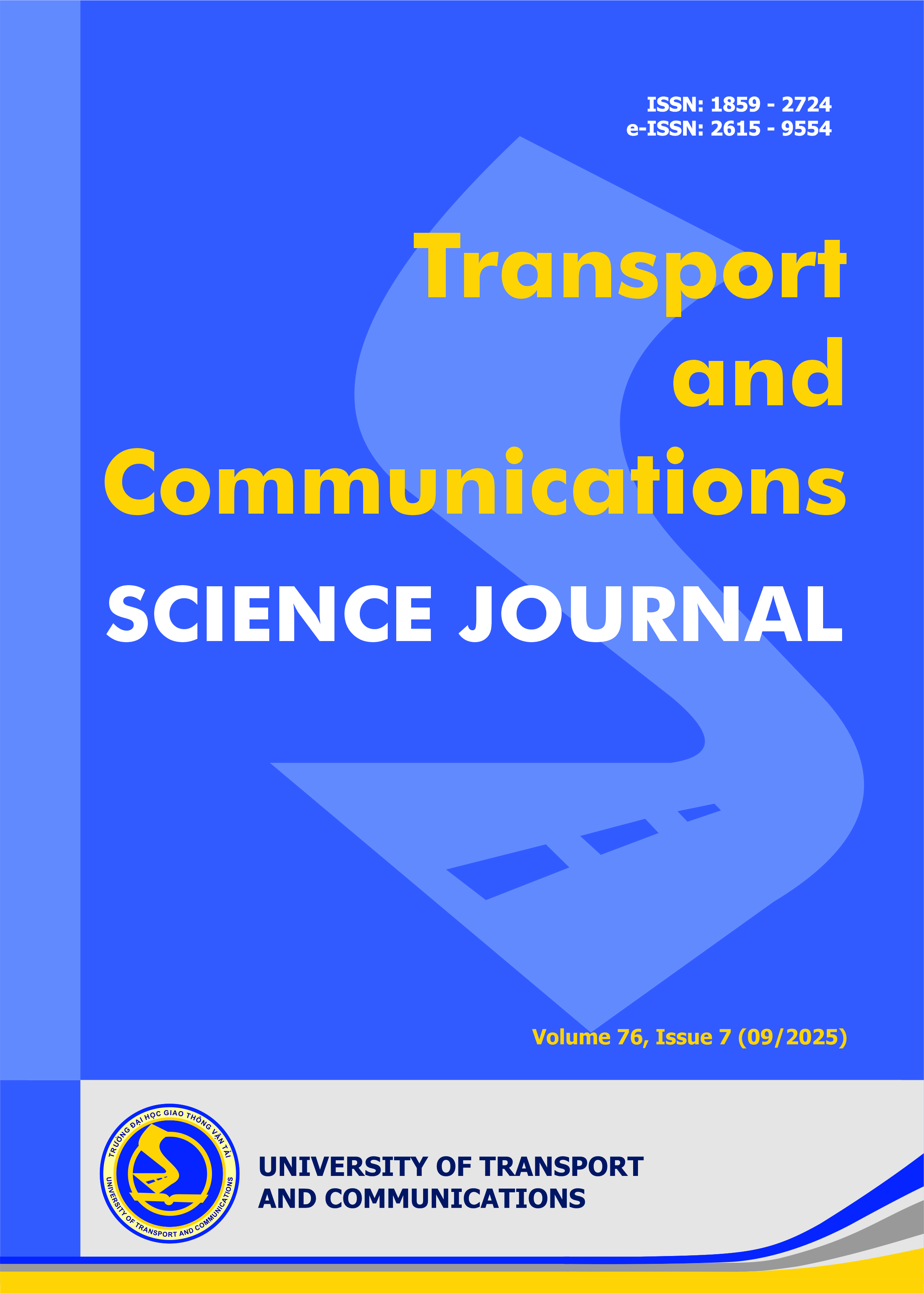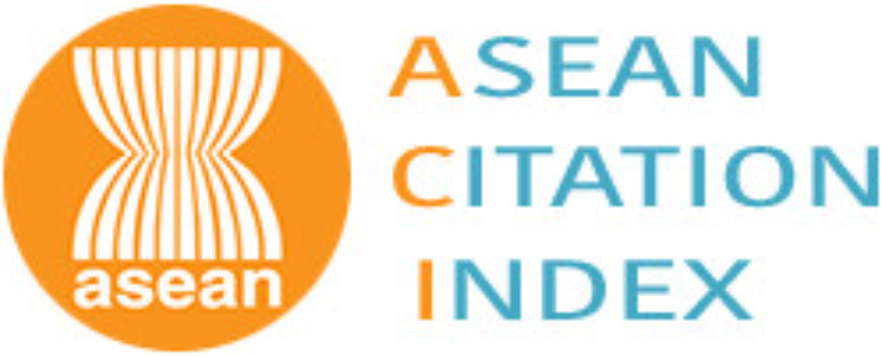Effect of groove depth on drag and aerodynamic characteristics of axisymmetric boattail models with longitudinal grooves
Email:
tranthehung_k24@lqdtu.edu.vn
Từ khóa:
RANS k-ω SST, longitudinal groove, axisymmetric boattail, flow separation
Tóm tắt
Reducing drag on boattail configurations remains a critical challenge in external aerodynamics. In this work, numerical simulations were conducted to examine the influence of longitudinal groove depth – represented by the groove-peak distance parameter A – on the flow behavior and drag characteristics of axisymmetric boattail bodies. The parameter A was varied between 0 and 0.3 times the body diameter (D). The computations employed the Reynolds-Averaged Navier–Stokes (RANS) equation for the similation. The k-ω SST turbulence model at a freestream velocity of 22 m/s. Results indicate that groove depth has negligible effect on drag at a 14° boattail angle, but at 18° a substantial reduction in drag of up to 11% was obtained for A = 0.3D. Analysis of pressure distribution, skin friction, and wake structure confirms that deeper grooves help suppress flow separation on the boattail surface. These findings highlight the importance of groove depth selection for optimizing aerodynamic efficiency in axisymmetric vehiclesTài liệu tham khảo
[1]. R. Merz, R. Page, and C. Przirembel, Subsonic axisymmetric near-wake studies, AIAA journal, 16 (1978) 656–662.
[2]. R. J. Krieger, S. R. Vukelich, Tactical missile drag, tactical missile aerodynamics, Progress in Astronautical Aeronautic AIAA, 104 (1986) 383–420.
[3]. P. R. Viswanath, Flow management techniques for base and afterbody drag reduction, Progress in Aerospace Science, 32 (1996) 79–129. http://doi.org/10.1016/0376-0421(95)00003-8
[4]. G. Rigas, A. Oxlade, A. Morgans, and J. Morrison, Low-dimensional dynamics of a turbulent axisymmetric wake, Journal of Fluid Mechanics, 755 (2014) R5.
[5]. W. Jiajan, R. Chue, T. Nguyen, and S. Yu, Boattail juncture shaping for spin-stabilized rounds in supersonic flight, Shock Waves, 25 (2015) 189–204.
[6]. L. Wu, Experimental investigations on drag-reduction characteristics of bionic surface with water-trapping microstructures of fish scales, Scientific Reports, 8 (2018) 12186.
[7]. T.H. Tran, H.Q. Dinh, H.Q. Chu, V.Q. Duong, C. Pham, V.M. Do, Effect of boattail angle on near-wake flow and drag of axisymmetric models: a numerical approach, Journal of Mechanical Science and Technology, 35 (2021) 563–573. http://doi.org/10.1007/s12206-021-0115-1
[8]. F. G. Howard, W. L. Goodman, Axisymmetric bluff-body drag reduction through geometrical modification, Journal of Aircraft, 22 (1985) 516–522. http://doi.org/10.2514/3.45158
[9]. A. Mariotti, G. Buresti, G. Gaggini, M.V. Salvetti, Separation control and drag reduction for boat-tailed axisymmetric bodies through contoured transverse grooves, Journal of Fluid Mechanics, 832 (2017) 514–549. http://doi.org/10.1017/jfm.2017.676
[10]. A. Mariotti, G. Buresti, M.V. Salvetti, Separation delay through contoured transverse grooves on a 2D boat-tailed bluff body: Effects on drag reduction and wake flow features, European Journal of Mechanics-B/Fluids, 74 (2019) 351–362. https://doi.org/10.1016/j.euromechflu.2018.09.009
[11]. N.D. Quang, T.H. Tran, D.A. Le, N.T Hieu, V.K Pham, T.S Ha, Drag reduction for axisymmetric boattail model by longitudinal groove cavity under low-speed conditions, Journal of Mechanical Science and Technology, 38 (2024) 4209–4220. https://doi.org/10.1007/s12206-024-0718-4
[12]. T.H. Tran, T. Ambo, T. Lee, L. Chen, T. Nonomura, K. Asai, Effect of boattail angles on the flow pattern on an axisymmetric afterbody surface at low speed, Experimental Thermal and Fluid Science, 99 (2018) 324–335. http://doi.org/10.1016/j.expthermflusci.2018.07.034
[13]. T.H. Tran, T. Ambo, T. Lee, T. Ozawa, L. Chen, T. Nonomura, K. Asai, Effect of Reynolds number on flow behavior and pressure drag of axisymmetric conical boattails at low speeds, Expriments in Fluids, 60 (2019) 1–19. http://doi.org/10.1007/s00348-019-2680-y
[2]. R. J. Krieger, S. R. Vukelich, Tactical missile drag, tactical missile aerodynamics, Progress in Astronautical Aeronautic AIAA, 104 (1986) 383–420.
[3]. P. R. Viswanath, Flow management techniques for base and afterbody drag reduction, Progress in Aerospace Science, 32 (1996) 79–129. http://doi.org/10.1016/0376-0421(95)00003-8
[4]. G. Rigas, A. Oxlade, A. Morgans, and J. Morrison, Low-dimensional dynamics of a turbulent axisymmetric wake, Journal of Fluid Mechanics, 755 (2014) R5.
[5]. W. Jiajan, R. Chue, T. Nguyen, and S. Yu, Boattail juncture shaping for spin-stabilized rounds in supersonic flight, Shock Waves, 25 (2015) 189–204.
[6]. L. Wu, Experimental investigations on drag-reduction characteristics of bionic surface with water-trapping microstructures of fish scales, Scientific Reports, 8 (2018) 12186.
[7]. T.H. Tran, H.Q. Dinh, H.Q. Chu, V.Q. Duong, C. Pham, V.M. Do, Effect of boattail angle on near-wake flow and drag of axisymmetric models: a numerical approach, Journal of Mechanical Science and Technology, 35 (2021) 563–573. http://doi.org/10.1007/s12206-021-0115-1
[8]. F. G. Howard, W. L. Goodman, Axisymmetric bluff-body drag reduction through geometrical modification, Journal of Aircraft, 22 (1985) 516–522. http://doi.org/10.2514/3.45158
[9]. A. Mariotti, G. Buresti, G. Gaggini, M.V. Salvetti, Separation control and drag reduction for boat-tailed axisymmetric bodies through contoured transverse grooves, Journal of Fluid Mechanics, 832 (2017) 514–549. http://doi.org/10.1017/jfm.2017.676
[10]. A. Mariotti, G. Buresti, M.V. Salvetti, Separation delay through contoured transverse grooves on a 2D boat-tailed bluff body: Effects on drag reduction and wake flow features, European Journal of Mechanics-B/Fluids, 74 (2019) 351–362. https://doi.org/10.1016/j.euromechflu.2018.09.009
[11]. N.D. Quang, T.H. Tran, D.A. Le, N.T Hieu, V.K Pham, T.S Ha, Drag reduction for axisymmetric boattail model by longitudinal groove cavity under low-speed conditions, Journal of Mechanical Science and Technology, 38 (2024) 4209–4220. https://doi.org/10.1007/s12206-024-0718-4
[12]. T.H. Tran, T. Ambo, T. Lee, L. Chen, T. Nonomura, K. Asai, Effect of boattail angles on the flow pattern on an axisymmetric afterbody surface at low speed, Experimental Thermal and Fluid Science, 99 (2018) 324–335. http://doi.org/10.1016/j.expthermflusci.2018.07.034
[13]. T.H. Tran, T. Ambo, T. Lee, T. Ozawa, L. Chen, T. Nonomura, K. Asai, Effect of Reynolds number on flow behavior and pressure drag of axisymmetric conical boattails at low speeds, Expriments in Fluids, 60 (2019) 1–19. http://doi.org/10.1007/s00348-019-2680-y
Tải xuống
Chưa có dữ liệu thống kê

Nhận bài
13/10/2024
Nhận bài sửa
12/08/2025
Chấp nhận đăng
11/09/2025
Xuất bản
15/09/2025
Chuyên mục
Công trình khoa học
Kiểu trích dẫn
Dam Vu Son, Q., Nguyen Dinh, Q., & Tran The, H. (1757869200). Effect of groove depth on drag and aerodynamic characteristics of axisymmetric boattail models with longitudinal grooves. Tạp Chí Khoa Học Giao Thông Vận Tải, 76(7), 939-950. https://doi.org/10.47869/tcsj.76.7.2
Số lần xem tóm tắt
80
Số lần xem bài báo
18









